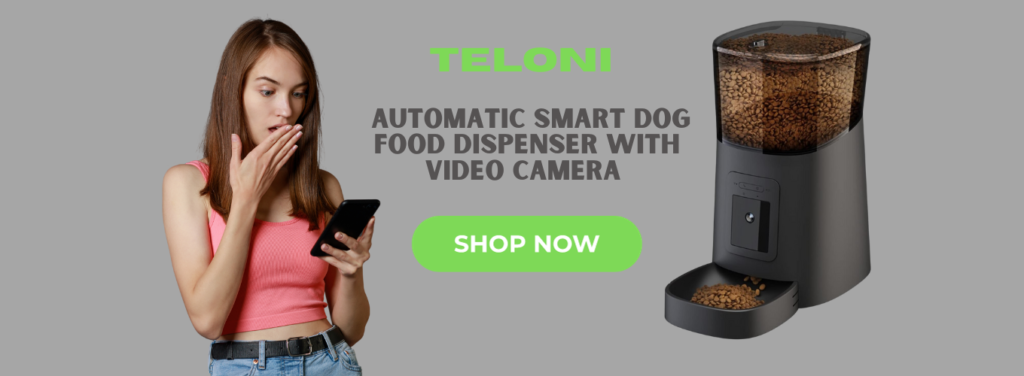
Tiny but Mighty: The Best Leashes for Toy and Small Breed Dogs
Toy and small breed dogs may be tiny in size, but they possess an incredible amount of energy, enthusiasm, and personality. As pet owners, it is our responsibility to ensure their safety and well-being, especially when it comes to walking them outdoors. Choosing the right leash for toy and small breed dogs is crucial in providing them with the freedom to explore while keeping them secure and in control. In this article, we will delve into the unique needs of toy and small breed dogs, explore the factors to consider when selecting a leash, and highlight the best leash options available. Whether you have a Chihuahua, Pomeranian, or Yorkshire Terrier, this guide will assist you in finding the perfect leash to keep your tiny companion safe and happy during your walks together.
1. Introduction: The Importance of Choosing the Right Leash for Toy and Small Breed Dogs
When it comes to our furry friends, size doesn’t always dictate their boldness and spirit. Toy and small breed dogs may be tiny in stature, but they are mighty in personality! And just like their larger counterparts, they rely on us humans to keep them safe and secure on our walks. That’s where choosing the right leash comes into play. In this article, we’ll explore the best leash options specifically designed for toy and small breed dogs. So whether you have a feisty Chihuahua or a spunky Shih Tzu, read on to discover the perfect leash for your pint-sized pooch.
2. Understanding the Unique Needs of Toy and Small Breed Dogs

2.1 Size and Strength Considerations
When it comes to toy and small breed dogs, their tiny size means they have specific needs when it comes to leashes. Unlike larger dogs who may require heavy-duty leashes to accommodate their size and strength, our petite pals need something lighter and more manageable. A leash that is too heavy or bulky can be uncomfortable and restrict their movement.
2.2 Exercise and Energy Requirements
While toy and small breed dogs may not require marathon-length walks, they still need regular exercise to keep them happy and healthy. These little dynamos have plenty of energy to burn, so a leash that allows them to move freely and explore their surroundings is essential.
2.3 Behavioral Traits and Sensitivities
Small breed dogs often have distinct behavioral traits and sensitivities. Some may be prone to pulling or have a tendency to be easily startled. This means that the leash you choose should provide you with control while minimizing any discomfort or anxiety for your furry companion.
3. Factors to Consider When Selecting a Leash for Toy and Small Breed Dogs
3.1 Leash Material and Durability
When it comes to choosing a leash for your toy or small breed dog, durability is key. Opt for a leash made from high-quality materials that can withstand the sometimes unpredictable antics of your furry friend. Nylon or sturdy yet lightweight materials are often ideal choices.
3.2 Length and Flexibility
The length and flexibility of a leash play a crucial role in providing your small pup with enough freedom to explore without compromising safety. Consider a leash that offers an appropriate length for your needs, whether it’s a short leash for close control or a longer one for more adventurous walks.
3.3 Comfort and Ergonomics
Comfort is not just reserved for us humans! Look for leashes that have padded handles or are ergonomically designed to prevent discomfort or strain on your hands. A comfortable leash ensures a pleasant walking experience for both you and your four-legged friend.

3.4 Safety Features
Safety should always be a top priority, regardless of your dog’s size. Look for leashes that have reflective stitching or additional features like a built-in traffic handle for added control in busy areas. Additionally, a sturdy and reliable clasp is essential to keep your tiny adventurer securely attached to the leash.
4. Best Leash Options for Toy and Small Breed Dogs: Breakdown and Comparison
4.1 Retractable Leashes
Retractable leashes offer the flexibility of allowing your toy or small breed dog to explore while still maintaining control. Look for models specifically designed for smaller dogs, as they will have a lighter and more manageable build. Keep in mind that proper training and supervision are crucial when using a retractable leash to ensure your furry friend’s safety.
4.2 Harness Leashes
Harness leashes are a great option for toy and small breed dogs that tend to pull or have a delicate neck. These leashes attach to a harness, distributing the pressure more evenly across your pup’s body. It provides better control without straining their neck and can be particularly beneficial for dogs prone to tracheal collapse or other neck-related issues.
4.3 Fixed Length Leashes
Fixed length leashes are straightforward and reliable options for toy and small breed dogs. They offer a consistent length, allowing for better control during walks. Look for leashes with lightweight materials and comfortable handles for a pleasant walking experience.
Remember, the perfect leash for your toy or small breed dog will largely depend on their individual needs, temperament, and your personal preferences. By considering the unique requirements of your furry companion and selecting a leash that offers the right combination of durability, comfort, and safety features, you can ensure your tiny but mighty friend enjoys every step of your adventures together.
5. Retractable Leashes: Pros and Cons for Toy and Small Breed Dogs
Retractable leashes can be a great option for toy and small breed dogs, but they come with both advantages and disadvantages. Let’s take a closer look at both sides.
5.1 Advantages of Retractable Leashes
Retractable leashes offer flexibility and freedom for your pint-sized pooch. They allow your furry friend to explore their surroundings while still having some control. With an extendable cord, you can adjust the leash length according to your dog’s needs, whether it’s a short lead for close-quarters or a longer reach for more roaming space. It gives your little buddy a taste of independence while keeping them safe.
5.2 Disadvantages and Potential Risks

While retractable leashes have their perks, they also come with a few downsides. One potential risk is that the thin cord can cause injury if it gets tangled around your dog or someone else. Moreover, the constant tension from the retraction mechanism can strain your dog’s neck and could lead to injury, especially for those delicate toy breeds. It can also be difficult to have full control over your dog’s movements, making it harder to prevent them from darting into dangerous situations.
6. Harness Leashes: A Safer Alternative for Toy and Small Breed Dogs
When it comes to safety, harness leashes are a fantastic choice for toy and small breed dogs. Here’s why:
6.1 Benefits of Harness Leashes
Harness leashes distribute the pressure evenly across your dog’s chest and shoulders, reducing the strain on their neck. This is particularly important for small dogs who are prone to neck injuries. The harness also provides better control and stability, minimizing the risk of your furry friend slipping out of their leash during walks. It’s the perfect solution for those little escapologists!
6.2 Types of Harnesses for Small Dogs
There are various types of harnesses available for small dogs, including vest-style harnesses, step-in harnesses, and front-clip harnesses. Each option has its own unique features and benefits, so you can choose the one that suits your dog’s specific needs and comfort.
6.3 Tips for Proper Harness Leash Usage
To ensure your dog’s safety and comfort, make sure the harness fits snugly without being too tight. Always attach the leash to the designated leash attachment point on the harness, and avoid using retractable leashes with harnesses, as they can create unnecessary tension. Regularly check the harness for wear and tear and replace it if necessary to maintain its effectiveness.
7. Fixed Length Leashes: Practical and Reliable Choices for Toy and Small Breed Dogs
If you prefer a more straightforward approach, fixed length leashes are practical and reliable options for toy and small breed dogs. Here’s what they have to offer:
7.1 Advantages of Fixed Length Leashes
With fixed length leashes, you have complete control over your dog’s movements. These leashes are typically shorter, keeping your furry friend close by your side and preventing them from straying into potential danger. They provide a sense of security and allow you to maintain constant supervision, which can be reassuring, especially when navigating busy areas.
7.2 Different Types of Fixed Length Leashes
Fixed length leashes come in various materials, including nylon, leather, and rope. Choose a leash material that feels comfortable in your hand and suits your dog’s temperament. Some leashes also come with additional features like reflective strips for enhanced visibility during nighttime walks.
7.3 Choosing the Right Fixed Length Leash
When selecting a fixed length leash, consider the size and strength of your dog. Opt for a leash that is sturdy and durable enough to handle their pulling if necessary. Additionally, ensure that the leash has a secure and reliable attachment to your dog’s collar or harness to prevent accidental detachment.

8. Conclusion: Finding the Perfect Leash to Keep Your Tiny Companion Safe and Happy.
When it comes to choosing the right leash for your toy or small breed dog, consider their safety, comfort, and your own control. Retractable leashes offer flexibility but come with potential risks. Harness leashes provide safer and more secure options, while fixed length leashes offer practicality and reliability. Ultimately, the perfect leash depends on your dog’s individual needs and preferences. So, go forth and find the leash that will keep your tiny companion safe, happy, and ready for adventure!
8. Conclusion: Finding the Perfect Leash to Keep Your Tiny Companion Safe and Happy.
Choosing the right leash for toy and small breed dogs is not a decision to be taken lightly. It requires careful consideration of their unique needs, behavior, and safety. Whether you opt for a retractable leash, harness leash, or fixed length leash, prioritize their comfort, security, and your control. By understanding the advantages and disadvantages of each leash type and assessing the specific requirements of your furry friend, you can make an informed decision. Remember, a well-chosen leash not only keeps your tiny companion safe but also enhances your walks together, allowing you both to enjoy the outdoors and create lasting memories. So, take the time to find the perfect leash and embark on countless adventures with your tiny but mighty four-legged friend.
FAQ
1. Are retractable leashes suitable for toy and small breed dogs?
Retractable leashes can be convenient but may not be the best option for toy and small breed dogs. The extended length of the leash can give them too much freedom and make it difficult to maintain control, especially in crowded or high-traffic areas. Additionally, the thin cord of retractable leashes may not be strong enough to handle the pulling or sudden movements of small dogs, posing a safety risk. It is important to consider the specific needs and behaviors of your dog before opting for a retractable leash.
2. How do harness leashes benefit toy and small breed dogs?
Harness leashes can offer several benefits for toy and small breed dogs. Firstly, they distribute the pressure more evenly across their chest, reducing strain on their neck and throat. This is particularly important for breeds susceptible to tracheal issues. Secondly, harnesses provide better control and prevent the dog from slipping out of the leash. Lastly, they can help manage pulling tendencies and improve your dog’s walking manners. When choosing a harness leash, ensure a proper fit and opt for one specifically designed for small dogs.
3. What length is recommended for a fixed length leash for toy and small breed dogs?
When it comes to fixed length leashes for toy and small breed dogs, a length between 4 and 6 feet is generally recommended. This length provides enough freedom for your dog to explore and sniff while still allowing you to maintain control. A shorter leash may restrict their movement, while a longer leash can increase the risk of entanglement or loss of control. Consider your dog’s size, behavior, and the environment you will be walking in when choosing the appropriate length for a fixed leash.

